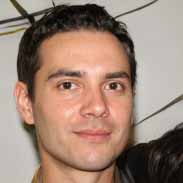Chp 1: Major Themes of Anatomy and Physiology – Flashcards
Unlock all answers in this set
Unlock answersquestion
Negative Feedback
answer
a self-corrective mechanism that underlies most homeostasis, in which a bodily change is detected and responses are activated that reverse the change
question
Vasoconstriction
answer
the narrowing of a blood vessel due to muscular constriction of its tunica media
question
Theory
answer
An explanatory statement, or set of statements, that concisely summarizes the state of knowledge on a phenomenon and provides direction for further study
question
Hypothesis
answer
An informed conjecture about a phenomenon that is capable of being tested and potentially falsified by experimentation or data collection
question
Differentiation
answer
Development of a relatively unspecialized cell into one with a more specific structure and function.
question
Vasodilation
answer
The widening of a blood vessel due to relaxation of the muscle of its tunica media and the outward pressure of the blood exerted against the wall.
question
Cell
answer
The smallest subdivision of a tissue considered to be alive; consists of a plasma membrane enclosing cytoplasm and, in most cases, a nucleus.
question
Dynamic Equilibrium
answer
A state of continual change that is controlled within narrow limits, as in homeostasis and chemical equilibrium.
question
Adaptation
answer
An evolutionary process leading to the establishment of species characteristics that favor survival and reproduction
question
Stimulus
answer
A chemical or physical agent in a cell's surroundings that is capable of creating a physiological response in the cell; especially agents detected by sensory sells, such as chemicals, light, and pressure.
question
Bipedalism
answer
The habit of walking on two legss; a defining characteristic of the family hominidae that underlies many skeletal and other characteristics of humans.
question
X Ray
answer
A high-energy, penetrating electromagnetic ray with wavelenghts in the range of 0.1 to 10 nm; used in diagnosis and therapy.
question
Anatomy
answer
The study of the structure of the body.
question
Cytology
answer
The study of cell structure and function.
question
Human
answer
Any species of primate classified in the family hominidae, characterized by bipedal locomotion, relatively large brains, and usually articulate speech; currently represented only by homo sapiens but including extinct species of homo and Australopithecus.
question
Physiology
answer
The study of the functional processes of the body.
question
Abdominal Cavity
answer
The body cavity between the diaphragm and the pelvic brim.
question
Body
answer
The entire organism.
question
in situ
answer
In the normal anatomical location.
question
Anatomical Position
answer
A reference posture that allows for standardized anatomical terminology. A subject in anatomical position is standing with the feet flat on the floor and slightly apart, arms down to the sides, and the palms (supine) and eyes directed forward.
question
Position Emission Tomography
answer
A method of producing a computerized image of the physiological state of a tissue using injected radioisotopes that emit positrons. PET scan.
question
Receptor
answer
A cell or organ specialized to detect stimulus, such as a taste cell or the eye.
question
Computerized Tomography
answer
A method of medical imaging that uses x-rays and a computer to create an image of a thin section of the body, CT scan
question
Organ
answer
Any anatomical structure that is composed of at least dwo different tissue types, has recognizable structural boundaries, and has a discrete function different from the structures around it. Many organs are microscopic and many organs contain smaller organs, such as the skin containing numerous microscopic sense organs.
question
Serous Membrane
answer
A membrane such as the peritoneum, pleura, or pericardium that lines a body cavity or covers the external surfaces of the viscera; composed of simple squamos mesothelium and a twin layer of areolar connective tissue.
question
Evolution
answer
A change in the relative frequencies of alleles in a population over a period of time; the mechanism that produces adaptations in human form and function.
question
Parietal
answer
Pertaining to a wall, as in the parietal cells of the gastric glands and parietal bone of the skull.
question
Characteristics of Organisms (9)
answer
Organization, cellular composition, metabolism, responsiveness, homeostasis, development, evolution, variability, feedback
question
Positive Feedback
answer
A self-amplifying cycle in which a physiological change leads to even greater change in the same direction. Eg. Production of Oxytocin during labor.
question
Organism
answer
A single, complete individual.
question
Tissue
answer
A mass of similar cells and cell products that form a discrete region of an organ and performs a specific function
question
situs inversus
answer
The organs of the thoracic and abdominal cavities are reversed between right and left.



